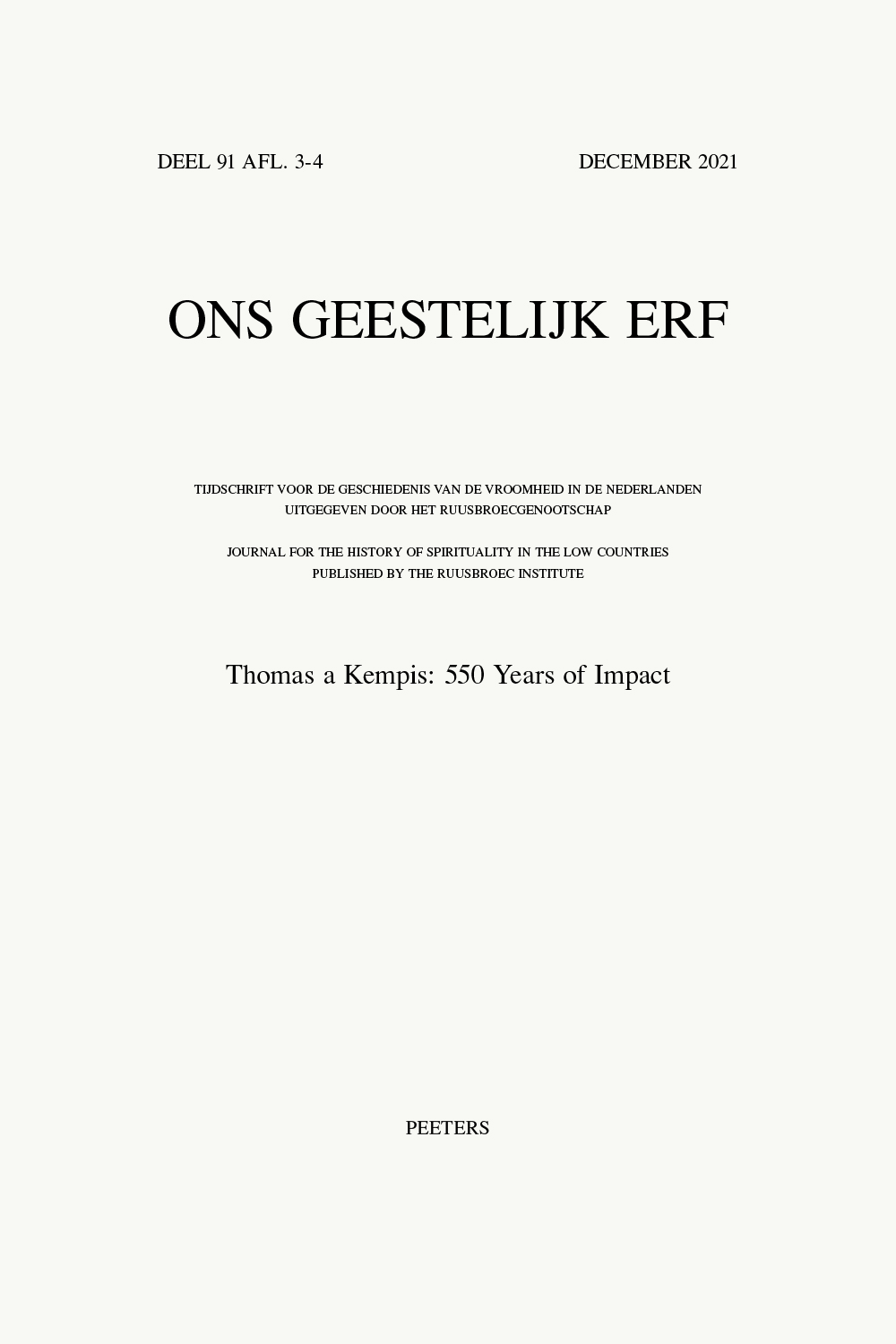 previous article in this issue previous article in this issue | next article in this issue  |

Preview first page |
Document Details : Title: 'Sinte Gregorius seet...' Subtitle: Werken met een kerkvader in Sint-Agnes, Maaseik Author(s): VAN DIJK, Mathilde Journal: Ons Geestelijk Erf Volume: 80 Issue: 3 Date: September 2009 Pages: 142-170 DOI: 10.2143/OGE.80.3.2045816 Abstract : The adherents of the Devotio Moderna regarded the Church Fathers as reliable guides in their search for true piety, which they defined as the imitation of Christ. This article discusses the role of one of the most important among them, Gregory the Great, and takes its point of departure from the surviving texts that were ascribed to him in the convent of Saint Agnes at Maaseik. The purpose is to study how these regular canonesses used Gregory in their education, how they appropriated his work and constructed him as a valuable helper in their search for spiritual perfection. The Maaseik collection contains both authentic and none-authentic work, such as the prayer Te adoro in crucem. Several manuscripts contain larger excerpts or dicta, amongst others in the Middle Dutch copy of Gerard Zerbolt of Zutphen’s De spiritualibus ascensionibus. In addition, the regular canonesses at Maaseik owned a complete Middle Dutch version of Gregory’s Homiliae in Evangelia. As far as modern devouts like the sisters at Maaseik were concerned, Gregory’s work was a part of the Divine Truth, like the other Church Fathers’ texts. Therefore, they felt free to link quotations from his work to quotations from other Church Fathers, in order to reach a meaningful interpretation, which would help them in their search for spiritual perfection. They focused on specific texts such as the Moralia in Job and the Homiliae in evangelia or parts thereof, which, in their view, provided the best advice for imitation of Christ. They loved Gregory because of the practical orientation of his work. Furthermore, in many ways he suited their spirituality, for instance in his stress on performative aspects of piety. At the same time it is clear that they interpreted him in order to be able to follow his lead in their context of a cloistered convent, for instance by practicing active charity primarily among their fellow sisters. Furthermore they enhanced certain elements in his work, such as his representation of the Christ as food. |
|


